Ukraine war: why Kyiv is cock-a-hoop about shooting down two Russian aircraft.
In recent days, the Ukrainian military claims to have destroyed or irretrievably damaged two Russian aircraft over the contested ground of Zaporizhzhia oblast.
The role of these aircraft is to provide the Russian military – particularly its ground force – with certain capabilities. These include the ability to coordinate air and ground forces, observe and track targets of opportunities and provide real-time aerial intelligence.
This article is the opinion of the author and not necessarily that of the UK Defence Journal. If you would like to submit your own article on this topic or any other, please see our submission guidelines.
Russia’s ability to perform these functions has now been significantly degraded. While the loss of individual aircraft will not have a decisive effect on Russian capabilities in the long term, it will make the application of air power and the ability to conduct operations on the ground, both offensive and defensive, more difficult in the short term.
The good news for Russia’s military is that it is winter, so things are fairly static on the ground at the moment because of the harsh weather. But this may be outweighed by other considerations. Most importantly, Russia is understood to have a limited stock of these aircraft types – and the Russian industrial base has a limited capacity to replace them.
Expensive and hard to replace
The Beriev A-50 is an airborne early-warning and control aircraft that first entered service in 1985. Its primary function is to track up to 300 targets simultaneously within a range of 180 miles using its onboard radar systems. These can be on land, or at sea or in the air.
Despite being in service for almost 40 years, the A-50’s age would not be a major concern for the Russian air force. The roles that this aircraft plays do not require it to have the latest cutting-edge technology in terms of speed or range, particularly given the areas in which it is operating.
The one weakness that this and almost all aircraft of this type have is that in hostile airspace they are vulnerable to air and ground-based defensive fire. This is despite their defensive capabilities, such as electronic countermeasures which are supposed to protect them from guided enemy missiles.
So deployment has to be considered carefully. It appears from open-source intelligence that the A-50 has been increasingly deployed to try to counter the increased risk to Russian military infrastructure in Crimea from Ukrainian air attack.
The sheer cost of the A-50, estimated at US$330 million (£260 million) per aircraft, will be a blow to Russian military planners. But a bigger worry by far will be the loss of a highly specialised crew that take many years to train. This is not a capability that can be easily and quickly replaced.
The Ilyushin Il-22, meanwhile, is an airborne command post that is used in the command and control and radio relay roles. These are two vital roles in warfare as the ability to coordinate forces in both an offensive and defensive capacity ensures that operations are conducted effectively and efficiently. This ensures that commanders are able to direct their forces in line with operational and strategic objectives.
Initial reports suggest that this aircraft was badly damaged but was able to return to a Russian air base. There have also been claims that the damage is so serious the aircraft cannot be repaired.
Friendly fire
There is no clear evidence as to how these aircraft were targeted. Apart from its initial claim to have destroyed or damaged the aircraft, Ukraine has not commented further. Russia meanwhile, has made no official comment. A Russian milblogger has reportedly suggested the planes had been hit by friendly fire or even shot down by a team of British SAS operatives using surface-to-air missiles.
This explanation may be an attempt aim to provide the Russian air force with the opportunity to deny that these incidents were due to the effectiveness of Ukrainian air defence systems, such as the Patriot ground-based system provided from December 2022 by the US. But this, in turn, raises important questions about how well Russia has trained its forces about the recognition of friendly and hostile aircraft as well as its ability to control the airspace in which it is operating above Ukraine
If it emerges that the loss of both these aircraft was due to Ukrainian action, it will bolster the confidence of their ground forces to engage and destroy these targets. It would also provide greater evidence for senior military and political leaders for the continued supply of these weapons systems.
How the aircraft were lost is almost an irrelevance. Both nations will put out their version of events as a continuation of the propaganda war that is assuming more and more importance in 21st-century conflict, particularly with the rise of social media platforms.
The loss of the A-50 and Il-22 are significant blows to Russian military capabilities in Ukraine. This is not down to the lack of numbers that exist within the Russian inventory, or the cost and time that will be required in replacing them.
These are obviously concerns, given the huge expense of state-of-the-art aircraft. But the loss of the highly specialised crew that take many years to train will create the largest capability gap, especially in command and control.
This will make the coordination of air and land operations near the frontlines much more complicated to plan and conduct, making them more hazardous for those who are conducting them and leading to greater confusion within the command chain.![]()
Matthew Powell, Teaching Fellow in Strategic and Air Power Studies, University of Portsmouth. This article is republished from The Conversation under a Creative Commons license. Read the original article.


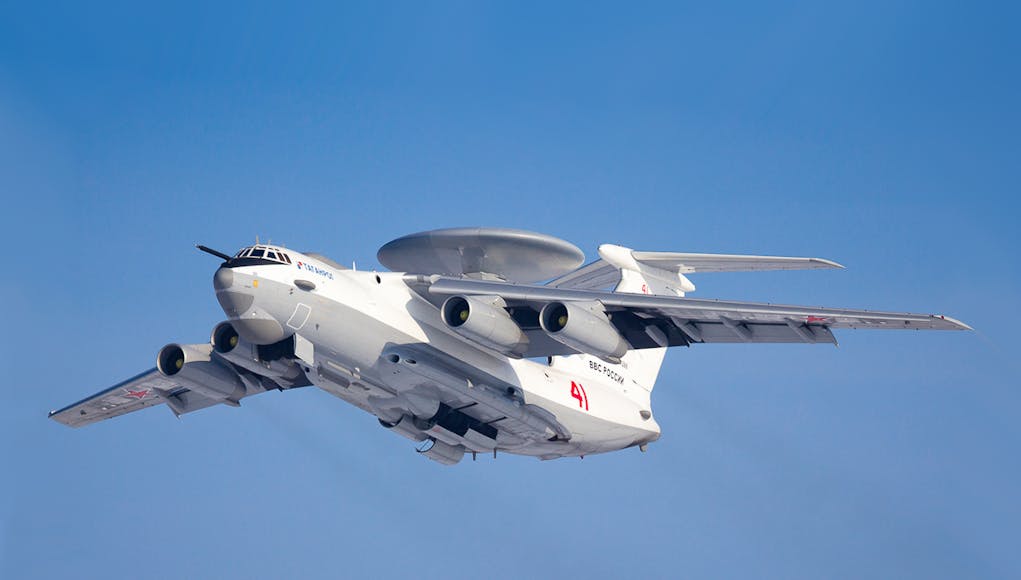
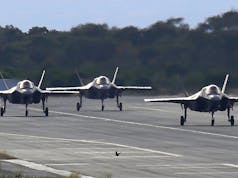
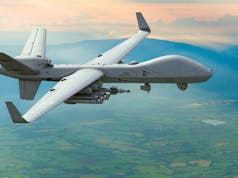
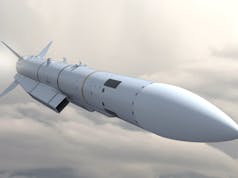

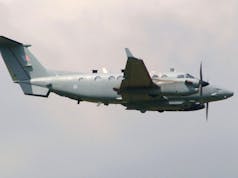

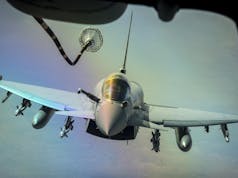




A very significant achievement for multiple reasons.
What is sometimes known in the colonies as a “twofer,” as in two for one. Well done, UKR. 👍
Very much so!
I did read that there may only be six of the A-50s left in service…that’s got to cover a nation the size of a large continent…if so that is a good percentage of this capability gone…well done Ukraine.
Wonder whether the Orcs will submit a bid for excess/retired NATO/RAF/USAF E-3s?:😁😉
I think there should be no retired E-3s to be honest..that’s a capability we should all be spending extra money to keep in the air… if the world does all go to crap and the west ends up fighting Russian in Europe, China in the pacific and Indian Occean, Iran in the gulf..Irans proxies in the Red Sea and levant and North Korea we will need them…..until the west knows it properly deterred china ( and therefore kept a lid on a world war) I think we should have a policy of growth ( basically between now and 2030 only bring in the new capabilities don’t scrap the sunset capabilities…we can manage to double run for half a decade).
there are numerous P3. retired aircraft at the AMARC reactivation base in Arizona Google AMARC experience the whole inventory of which aircraft and how many of, are in storage for possible reactivation 330 f 16’s anyone?
If and it’s a big if a war kicked off no where will be safe to keep weapons stored in the open.
Some well placed strikes/bombs etc could cause havoc on any countries defence factories.
And what enemy does the US have that is going to be in a position to target a boneyard in the in the western states?
Unless Mexico gets particularly angry about Trump’s racism, I fail to see how anyone would ever threaten those stored aircraft, or why they would target that yard over the thousands of more relevant targets in the US.
Well as we see in Russia people on the ground can strike anywhere and get away. Drones can be hard to detect and come from in or outside the target country.
If China is being hit in its own country and the USA was activating aircraft stored at AMARC we can assume that it will be a high value target. No where is off limits in modern conflict unfortunately
Providing cover for all sites is a huge task.
Probably someone got sloppy with their cigarette.
More old so iet era junk
It’s a good hit, how it happened is a bit of a mystery. Basically a tricky shot for patriot from near front lines. Another SAM? A long range S300 missile could do it but Ukraines a bit low to none on those.
A fighter aircraft surely couldn’t have got that close. Even a longe range amraam shot to hit aircraft over the Sea of Azov would mean the aircraft is over enemy territory.
This war is a total disaster for all involved. Russia has ruined peace in Europe. Keep hoping russia will run short of cash at some point It’s sold a massive amount of yaun from its wealth fund to pay for the war. It’s unable to trade its gold reserves. At some point hopefully they will say enough of this pointless war.
As said “how it happened is a bit of a mystery”, Russia claiming blue on blue, but if it was shot down by a Ukranian long range Russian AA missile it brings into question how survivable are the RAF Wedgetails.
Amazing that Russian leadership sees declaring we shot our own forces as a better option than declaring the other side did it.
The aircraft were flying predictable patterns and had been doing it repeatedly.
As with most losses it comes down to underestimating the enemy, becoming complacent, plans going wrong etc etc.
anything in combat is vulnerable and for things like awacs the closer to the battlefield the better there can see.
Flack damage looks like a re-skin plus hydraulic repair on IL-22.
Best scrapped for parts